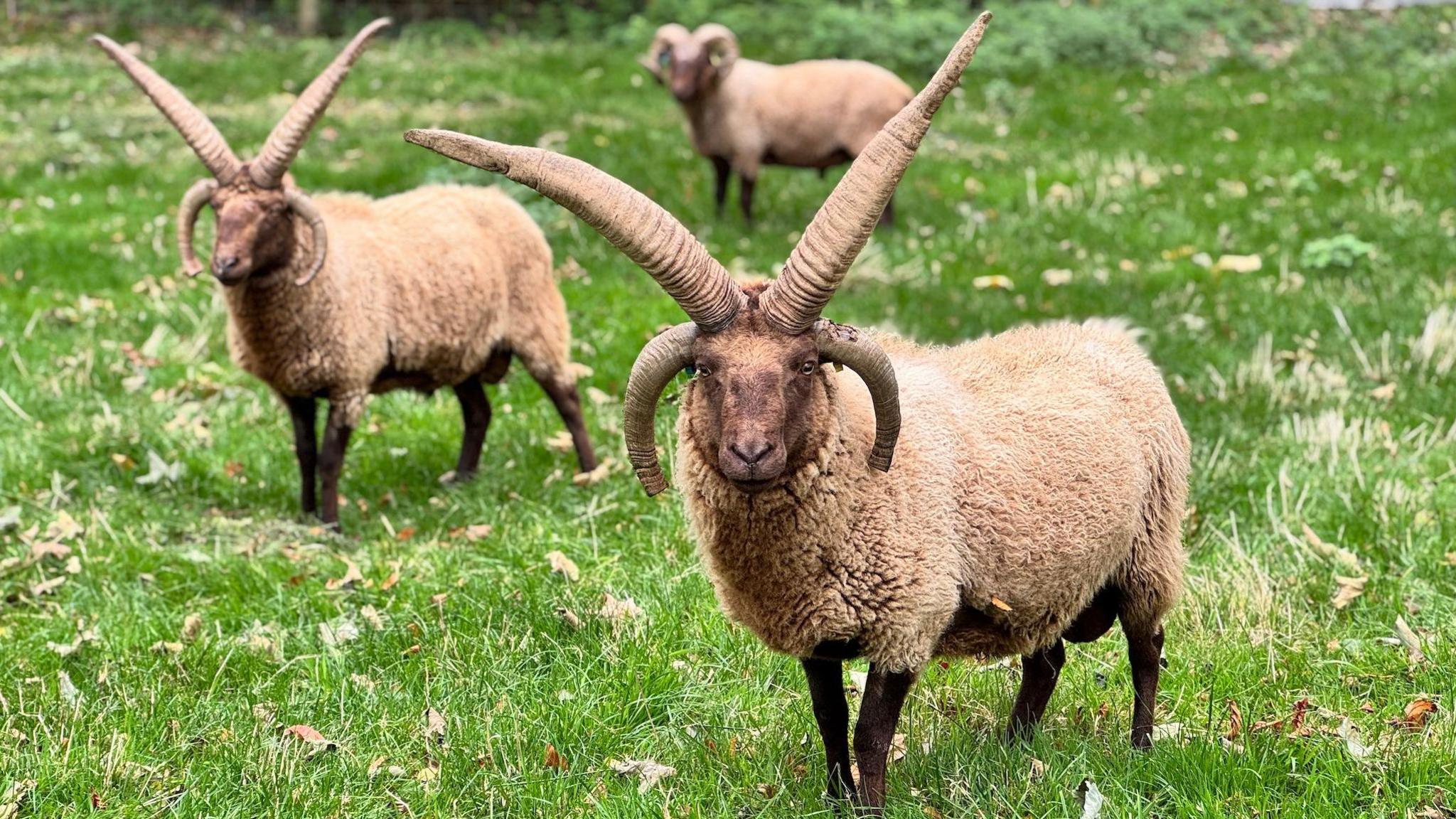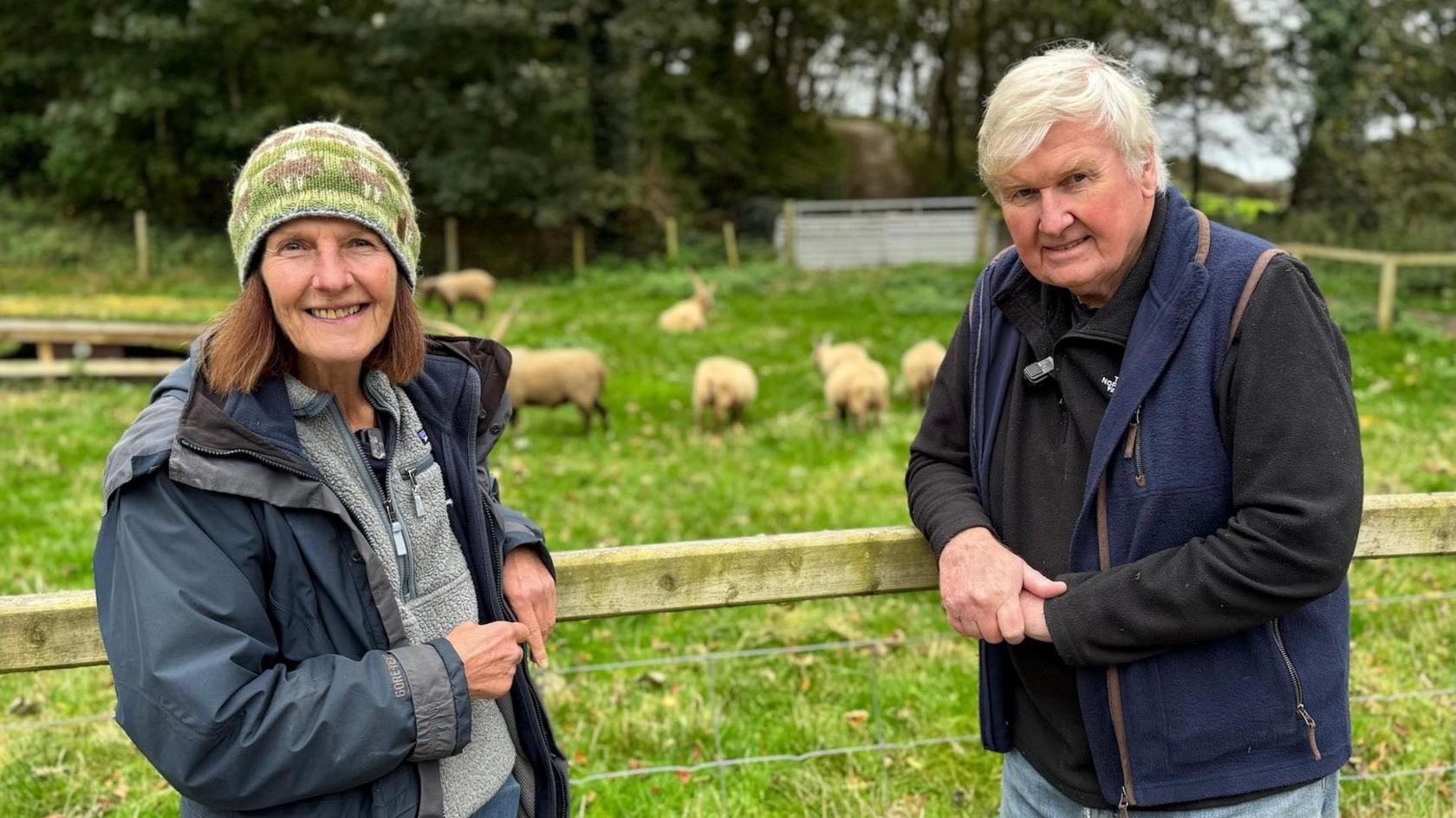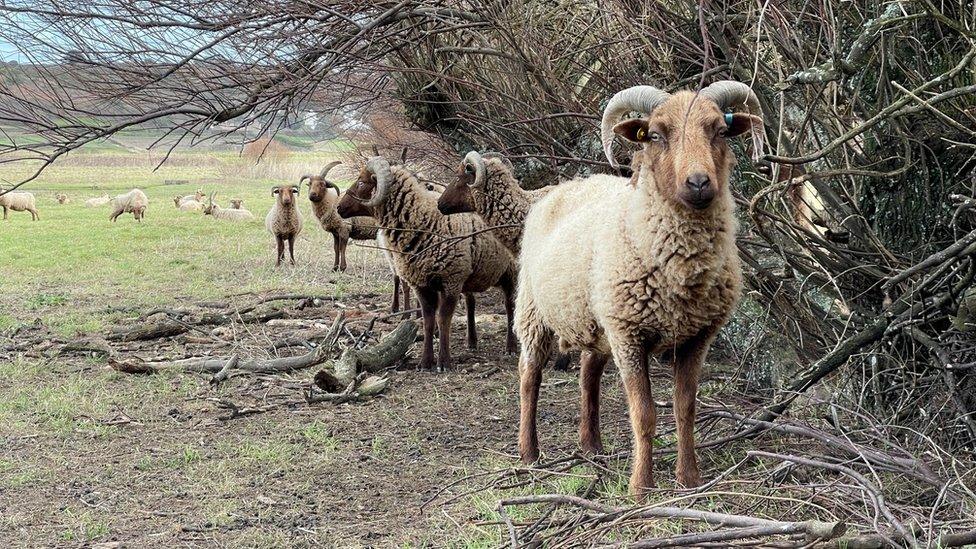Farmer calls to protect 'amazing' endangered sheep

The Loaghtan breed dates back more than 1,000 years
- Published
With four striking horns, the rams of an Iron Age breed of sheep native to the Isle of Man are sure to garner attention in particular - but the future of the Loaghtan is by no means certain.
The breed was added to the Rare Breeds Survival Trust's urgent priority list earlier this year, which recorded a 34% decline in pedigree offspring since 2022.
Jenny Shepherd, with her apt surname, and her partner own the world's largest flock of Manx Loaghtans on Ballacosnahan Farm and hope to raise awareness of the breed's commercial viability.
Ms Shepherd calls them "amazing sheep, their wool is fabulous", adding their meat was "more like venison than lamb, which absolutely lends itself to charcuterie".
They have kept Loaghtans since 2003 on their 200-acre (80-hectare) farm stretching from the top of Slieau Whallian down to the river Neb.
Ms Shepherd said with such a variety of terrain, the breed was also "perfect for conservation grazing".
"They thrive on rough moorland where you've got loads of different wild flowers and plants, and they just do much better on that sort of ground," she said.

Jenny Shepherd and her partner Rawdon Hayne own the largest flock of Loaghtans in the world
The breed dates back 1,000 years on the island, but it was not until the early 1800s that white sheep began to spread, which were "bigger and matured quicker", Ms Shepherd said.
"Over the 1800s they almost completely displaced the Loaghtans," she added.
'Story of survival'
It was then a man called Ceaser Bacon noticed the decline and "rounded up what he could" and, in 1895, "realised he only had four ewes that were fit to breed from".
"So most of the world population comes from those four ewes", Ms Shepherd explained, adding it was "an amazing story of survival".
While Loaghtans took longer to mature, meaning they had to be cared for over the winter, Ms Shepherd said the meat was "really quite special" and their wool was worth a lot more than white sheep.
And, despite having the largest flock in the world, Ms Shepherd said it was "not a badge I wear with pride".
"I would love it if there were some other big commercial Loaghtan farms because that would be much safer for their future," she said.
"It's really sad [that] they're so endangered - they're truly Manx animals."

The pair are the largest producers of Loaghtan wool
Alice Lennox, the Scottish co-ordinator for the Rare Breeds Survival Trust, said: "Unfortunately, since 2022, there's been a 34% decrease in the number of Manx Loaghtan dams producing pedigree offspring.
"Their rarity is precisely why it's important to maintain them and using them sustainably through wool production, meat production, and habitat management, that will help secure their future."
She added that "eating them actually is supporting them".
"There is a merit in economic incentive, in buying their meat, eating them - and it gives farmers a reason to keep them and breed them as well," she said.
Correction 17 November: This article previously described the Manx Loaghtan as a species of sheep rather than breed. This has been corrected.
Related topics
- Published3 May

- Published3 February 2023

- Published13 June 2017
